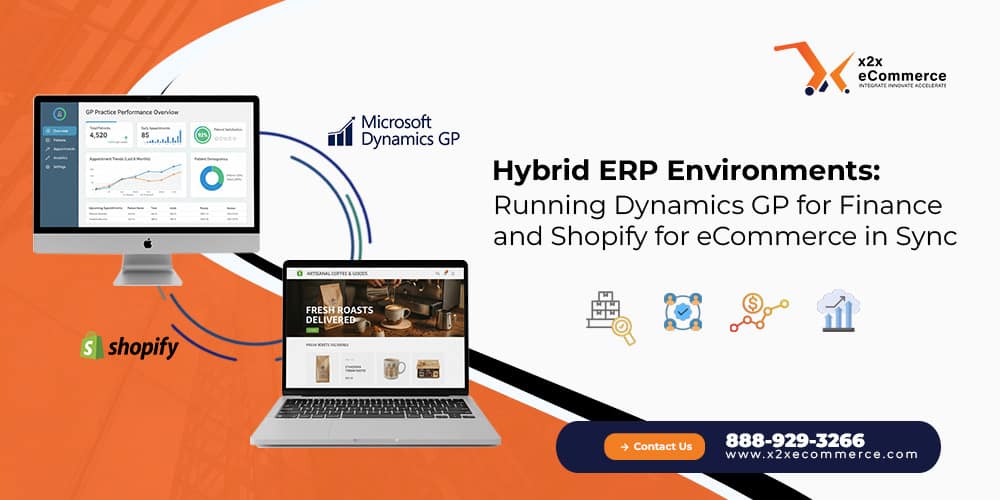
In the fast-paced business environment of business in the information age, not all business companies are designed or need to be entirely to move to a new ERP platform. Most mid-sized companies retain Microsoft Dynamics GP (Great Plains) as their financials management system and add Shopify as their new eCommerce site. That leaves a hybrid ERP setup where cloud and traditional systems must play together in perfect harmony to sustain business as usual.
Why Companies Still Trust GP
Dynamics GP continues to be a robust on-premises ERP for accounting, inventory, and financial reporting. Its legacy, reliability, and broad-based customization make it hard to replace overnight. Vendors have poured decades of process, reports, and integration into GP.
Yet, with revenue and customer interaction through eCommerce, businesses need to have a front-end platform like Shopify to be able to handle digital transactions, online customer interaction, and omnichannel commerce.
The Hybrid Challenge: Two Systems, One Busines
Concurrent operation of GP and Shopify generates the core challenge, data synchronization. Lacking integration, businesses usually face:
- Manual re-keying of web orders within GP
- Store vs. back-office inventory discrepancies
- Latency in updating GP price, product, or fulfillment status
- Disconnection from customer and financial data
The disconnection results in slow financial closes, incorrect stock visibility, and subpar customer experiences.
Synchronizing GP and Shopify: The New Solution
Shopify and GP can exchange data cleanly back and forth with the right integration layer or connector.
Here’s what a typical integration accomplishes:
Order Synchronization
Shopify orders are pushed automatically to GP, creating sales orders or invoices without having to be manually entered.
Inventory Updates
GP inventory levels sync back to Shopify to prevent overselling and stockout.
Customer Sync
New Shopify customers are entered in GP within one database.
Posting of Finance
Tax, payment, and refund postings are performed from Shopify to GP for accounting correctly.
Product Management
Price or SKU changes within GP can be pushed to Shopify so the storefront remains current.
Tools and Integration Methods
Various integration tools bridge the gap between GP and Shopify like:
- Middleware Connectors: Mechanisms like SmartConnect, eOne, or Celigo synchronize two-way data exchange.
- Custom API Integrations: Uses Shopify API services with GP to accommodate individual needs.
Best Practices for a Stable Hybrid Environment
To get the best out of your GP–Shopify integration:
- Set Data Ownership: Decide which system is the “master” of products, prices, and stock.
- Automate Where Possible: Automate where possible to reduce touch and error.
- Schedule Regular Syncs: Real-time isn’t necessary; schedule smart intervals to optimize performance.
- Monitor and Log Transactions: Monitor successful and failed syncs through dashboards or logs.
- Plan for Scalability: As more orders are taken, ensure your integration can scale with greater orders and more sales channels.
The Road Ahead: Hybrid to Cloud
Hybrid configuration of ERP offers flexibility for businesses that are not yet ready for a full ERP transition. It enables you to make customer-facing applications (e.g., Shopify) up to date without losing the stability of GP.
But in the end, most companies do lean towards Microsoft Dynamics 365 Business Central, with its natively cloud-connected, modern APIs, and native Shopify integration through Microsoft’s own adapter. To be running GP and Shopify in parallel today puts your company in the best position to make the smooth transition when the time comes.
Final Thoughts
Hybrid ERP environments are no compromise; they’re a strategic link.
With Dynamics GP and Shopify aligned, businesses can have financial control, deliver superior online experiences, and future-proof to a cloud-first world.
With x2x eCommerce as an integration partner, the task is clear — get your systems talking, so your business never misses a beat.





